| Entries |
| D |
|
Douglas
|
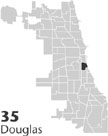 Community Area 35, 3 miles S of the Loop. In 1852
Stephen A. Douglas,
lawyer, politician, and land speculator, purchased 70 acres of land located along the lake between 33rd and 35th Streets. Douglas built a house at 34 E. 35th Street and
donated land to the Baptists who opened the first
University of Chicago
in 1860.
Community Area 35, 3 miles S of the Loop. In 1852
Stephen A. Douglas,
lawyer, politician, and land speculator, purchased 70 acres of land located along the lake between 33rd and 35th Streets. Douglas built a house at 34 E. 35th Street and
donated land to the Baptists who opened the first
University of Chicago
in 1860.
At the beginning of the Civil War (1861), the Union army set up Camp Douglas between 31st and 33rd Streets, first as a training facility for the Illinois regiment and subsequently as a prisoner of war camp for Confederate soldiers. Forty-four hundred Confederate soldiers died because of poor conditions at Camp Douglas.
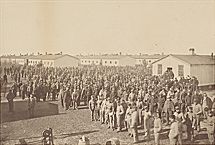
|
The area attracted many of the city's leading Jewish families, who in 1881 built a hospital with $200,000 from the estate of Michael Reese. Less than a decade later, the Jewish community completed the Kehilath Anshe Mayriv Synagogue (1890) at 33rd and Indiana. Designed by Dankmar Adler and Louis Sullivan, it has housed the Pilgrim Baptist Church since 1922.
Working-class families employed in the nearby meatpacking industry, railroad shops, and breweries constructed small balloon frame houses and a few brick cottages along Federal Street. Irish workers built and worshiped at St. James Church (1880) at 29th and Wabash. In 1869, the Sisters of Mercy relocated their Mercy Hospital to 26th and Calumet. In 1889, the Irish helped to establish De La Salle Institute, a Catholic academy for young men. Mayors Martin Kennelly, Richard J. Daley, Michael Bilandic, and Richard M. Daley graduated from this school.
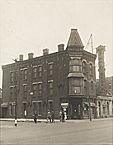
|
During the 1920s through the 1940s, Douglas, along with the community to the south, Grand Boulevard, became the center of black business and cultural life. Popularly known as the Black Metropolis or Bronzeville, the area exhibited an amazing diversification of professional and commercial interests. By day black people transacted business in companies housed in the Jordan, Overton Hygienic, and Chicago Bee Buildings, and at night they went to clubs where they heard musicians like King Oliver, Louis Armstrong, and Jelly Roll Morton.
After the stock market crash of 1929, most of the black-owned banks and insurance companies went out of business. The city's segregated real-estate market limited black housing opportunities. Many middle-class houses were converted into apartments, falling into disrepair.
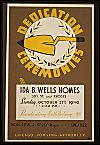
|
In 1952, the CHA completed Prairie Avenue Courts and in 1961 they built the Clarence Darrow Homes. In between, they constructed Stateway Gardens at 35th and State, along with the Robert Taylor Homes to the south, replacing all that remained of the worker cottages and tenements along Federal Street.
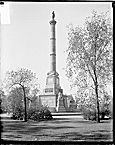
|
Since the late 1980s, there has been a concerted effort to bring the old Black Metropolis back to life. The Mid-South Planning and Development Commission and a number of local community organizations have been in the forefront of this renaissance. The majority of the rebirth has taken place in the area located between the two high-rise developments called “The Gap” (31st to 35th Streets and King Drive to Michigan Avenue) a national historic landmark district.
| Douglas (CA 35) | |||||
| Year |
Total
(and by category) |
Foreign Born | Native with foreign parentage | Males per 100 females | |
| 1930 | 50,285 | 2.9% | 3.5% | 103 | |
| 5,517 | White (11.0%) | ||||
| 44,644 | Negro (88.8%) | ||||
| 124 | Other (0.2%) | ||||
| 1960 | 52,325 | 1.6% | 1.8% | 91 | |
| 3,880 | White (7.4%) | ||||
| 48,031 | Negro (91.8%) | ||||
| 414 | Other races (0.8%) | ||||
| 1990 | 30,652 | 3.7% | — | 71 | |
| 1,683 | White (5.5%) | ||||
| 27,976 | Black (91.3%) | ||||
| 123 | American Indian (0.4%) | ||||
| 806 | Asian/Pacific Islander (2.6%) | ||||
| 64 | Other race (0.2%) | ||||
| 253 | Hispanic Origin* (0.8%) | ||||
| 26,470 | 5.5% | ||||
| 1,841 | White alone (7.0%) | ||||
| 22,719 | Black or African American alone (85.8%) | ||||
| 67 | American Indian and Alaska Native alone (0.3%) | ||||
| 1,393 | Asian alone (5.3%) | ||||
| 9 | Native Hawaiian and Other Pacific Islander alone (0.0%) | ||||
| 111 | Some other race alone (0.4%) | ||||
| 330 | Two or more races (1.2%) | ||||
| 295 | Hispanic or Latino* (1.1%) | ||||
The Encyclopedia of Chicago © 2004 The Newberry Library. All Rights Reserved. Portions are copyrighted by other institutions and individuals. Additional information on copyright and permissions.